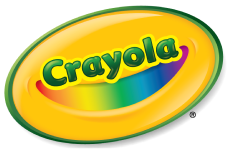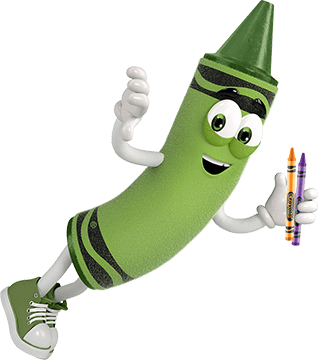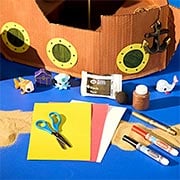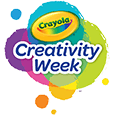¡Nos encantan las nuevas y emocionantes formas de usar los productos Crayola! Los huevos que han sido decorados con nuestros productos no se recomiendan para el consumo, ya que los materiales de arte no son aptos para uso alimentario.
Si tienes preguntas adicionales, ¡nos encantaría saber de ti! No dudes en llamarnos o enviarnos un mensaje de texto al 1-800-CRAYOLA días laborables entre las 9 AM y las 4 PM hora del Este. Si prefieres enviarnos un correo electrónico, visita nuestra página de contacto.
Preguntas relacionadas
Explora respuestas a preguntas comunes, consejos útiles para eliminar manchas e ideas creativas para aprovechar al máximo nuestros materiales de arte y recursos gratuitos.
-
Q: Can I use Crayola paints on pumpkins?
A: Yes! Crayola Acrylic Paints, Crayola Quick-Dry Paint Sticks, and Crayola Washable Project paints are perfect for creating art on both real and fake pumpkins.
Q: Do you offer any pumpkin painting kits?
A: Absolutely! We have several kits available, including:
- No Carve Pumpkin Decorating Kit with Paint Sticks
- Galaxy Paint Stick Pumpkin Decorating Kit
- Acrylic Pumpkin Painting Set, Classic Colors
Q: Are there any tips for painting pumpkins?
A: Yes, here are a few tips:
- Water-based products work best on porous surfaces.
- Water-based products may run or wash off when exposed to moisture, so it’s best to test the paint on your pumpkin first.
- Allow a little extra drying time for the paint to adhere properly.
- We recommend displaying your painted pumpkins indoors to protect them from the elements.
Q: Can I eat pumpkins that have been decorated with Crayola products?
A: No, pumpkins decorated with our products are not meant for consumption as our art materials are not food-grade.
Q: Where can I find DIY pumpkin-themed crafts?
A: Check out our DIY pumpkin-themed crafts section on our website for more creative ideas!
-
If your pet has ingested a Crayola or Silly Putty product, please contact a veterinarian for assistance. All Crayola and Silly Putty products have been evaluated by an independent toxicologist and found to contain no known toxic substances in sufficient quantities to be harmful to the human body, even if ingested or inhaled. In addition, Crayola and Silly Putty art materials carry the Art and Creative Materials Institute's (ACMI) APPROVED PRODUCT (AP) seal, which indicates these products meet or exceed specific quality standards.
-
Crayola® Portfolio® Series products are generally used by adults and older children because of their permanence. This product line offers the quality of professional art materials without the professional prices. Portfolio Series products include Acrylic Paints and Water-Soluble Oil Pastels. Use our where to buy store locator to help you find local and online retailer for purchasing options.
-
Yes, all Crayola® and Silly Putty® products are non-toxic and safe to use. Crayola has been a trusted brand in homes and schools for over 100 years, prioritizing safety since 1903.
Independent toxicologists consistently evaluate our products, confirming they contain no known toxic substances in quantities sufficient to harm the human body, even if ingested or inhaled. Both Crayola and Silly Putty art materials carry the Art and Creative Materials Institute's (ACMI) APPROVED PRODUCT (AP) seal, indicating they meet or exceed specific quality standards.
-
Although the exact ingredients in our products are proprietary, we can provide a list of the most common ingredient requests not found in products currently manufactured by Crayola. This list does not apply to licensed products, such as Crayola-brand bath, personal care, or food items, which are manufactured by licensing partners. Please check the back of the packaging for manufacturer details or if the ingredient in question is not included on this list and is due to a medical concern, please contact Crayola Customer Support with any questions.
- Casein
- Eggs & Egg Shell
- Fish/Shellfish
- Latex*
- Milk
- Nut & Nut Oil (including Tree Nuts)
- Peanuts
- Red Dye #40
- Sesame & Sesame Oil
- Whey
*It is possible that latex gloves may have been worn during the manufacture and distribution of raw materials, components, or finished goods.




